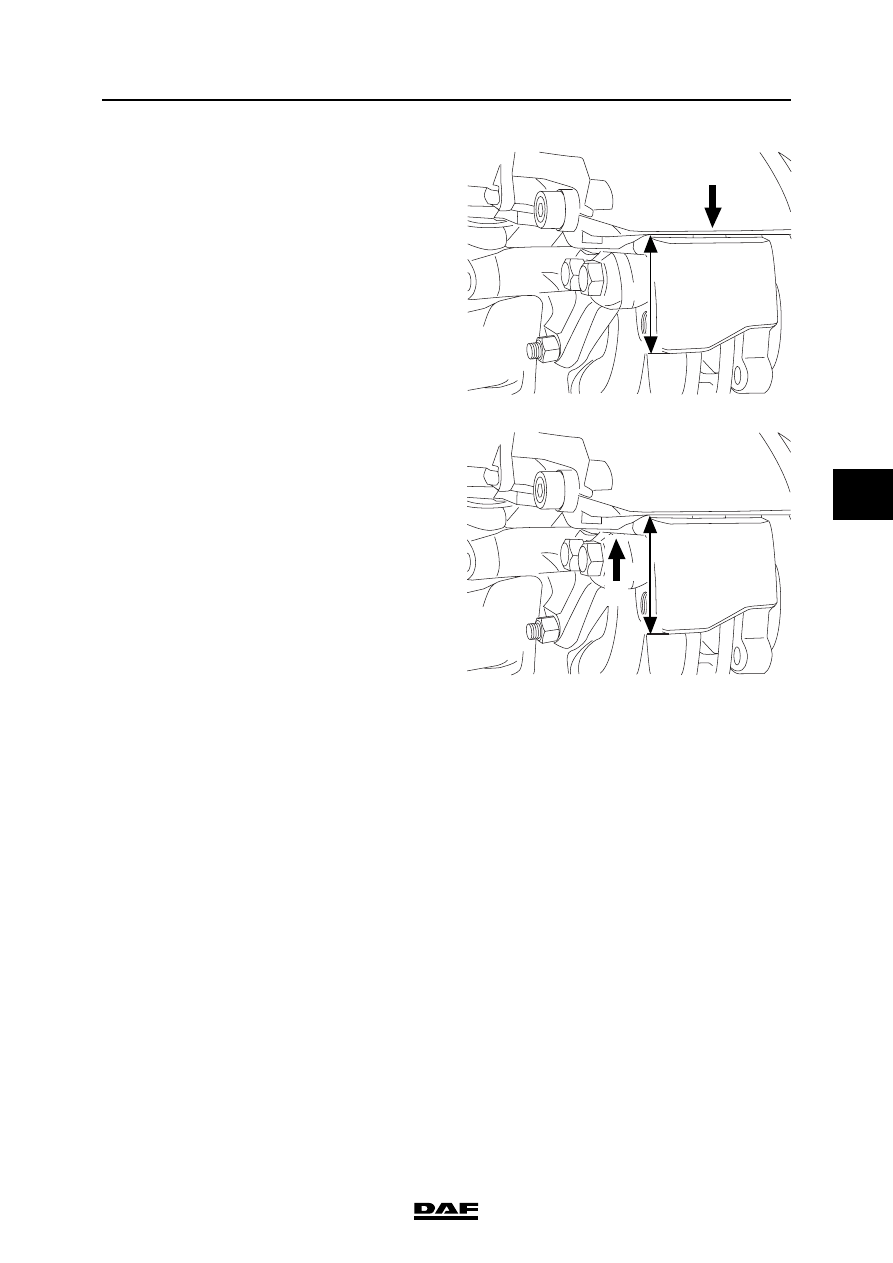DAF CF65, CF75, CF85 Series . Manual - part 912

©
200423
2-33
Inspection and adjustment
BRAKE SYSTEM AND COMPONENTS
ΧΦ65/75/85 series
6
5
2.
Push the brake calliper as far as possible
towards the brake calliper support (C).
3.
Measure the distance "X".
4.
Push the reversed brake calliper as far as
possible towards the brake calliper
support (D).
5.
Measure the distance "Y".
6.
Calculate the difference between
the measured distances, "Y" - "X"
(see "Technical data").
7.
Fit the brake pads.
X
R600710
C
Y
R600711
D